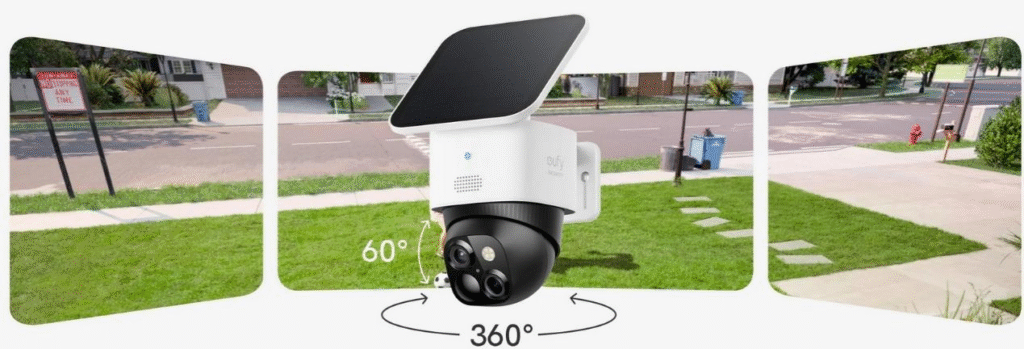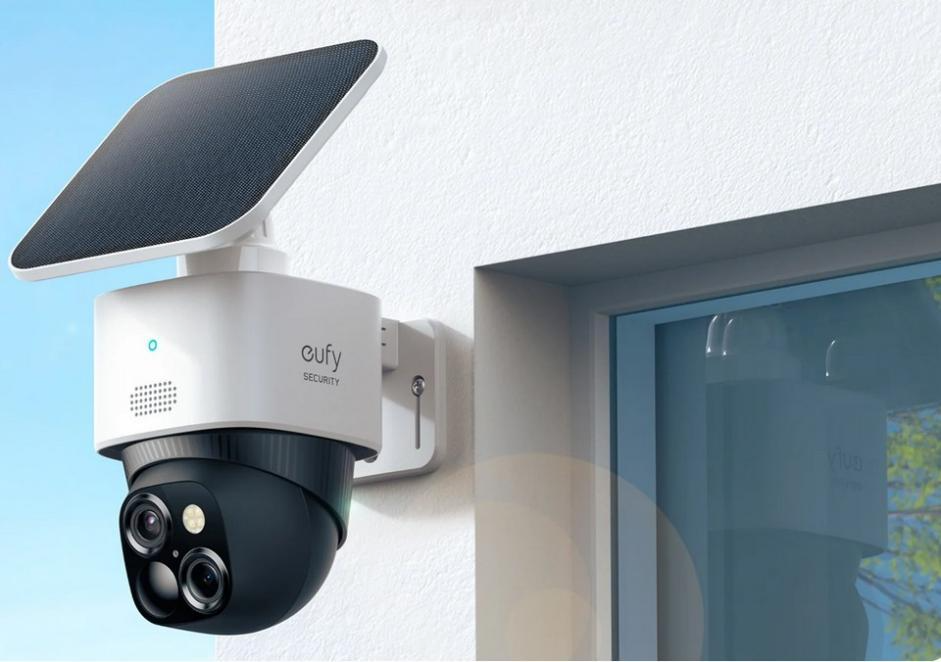With so many different types and features, picking the best solar security camera might be difficult. Homeowners and business owners desire a gadget that is dependable and doesn’t require frequent maintenance or electricity. Everyday performance may be significantly impacted by important aspects including solar panel efficiency, video resolution, and intelligent detection. A top-notch camera should record in high definition, function effectively in low light, and safely retain recordings. For the camera to never miss any crucial moments, power choices and connections are equally crucial. By concentrating on the most crucial aspects, you may choose a camera that genuinely delivers.
Contents
What Power and Charging Features Should You Look For?
Solar Panel Efficiency and Battery Capacity
Solar panel efficiency refers to how efficiently a solar panel transforms sunlight into useful electricity. A high-efficiency panel charges faster and performs more consistently, particularly in places with low sunshine. Battery capacity, like panel quality, is crucial to long-term reliability. A bigger battery allows the camera to work continuously overnight and on overcast days. Many top-rated cameras include lithium batteries that last longer and recharge rapidly. To determine durability, shoppers should compare capacity values in milliamp-hours (mAh). Together, efficient panels and powerful batteries enable customers to rely on their solar security camera in a variety of weather and lighting circumstances without having to recharge it frequently.
Backup Power Options for Cloudy Days
Even the greatest solar cameras struggle in lengthy periods of rain or gloomy weather. This is why backup power choices are important. Some models contain built-in rechargeable batteries that can keep the camera working for days without sunlight. Others let customers attach an external power adaptor for temporary charging. In higher-end cameras, hybrid systems use solar as the primary power source but automatically switch to a wired connection when solar energy is low. Choosing a device with dependable backup guarantees that security coverage does not lapse at key periods. This function helps homeowners avoid monitoring gaps and provides peace of mind throughout the year.
Charging Speed and Energy-Saving Modes
Charging speed influences how soon a camera recovers from a low battery alert. Models with rapid charging technology may recharge in only a few hours in direct sunlight, eliminating downtime. Simultaneously, energy-saving modes increase battery life when sunshine is restricted. To conserve power, these modes may shorten recording intervals, lower the quality, or restrict access to live watching. Some smart cameras go into standby mode until motion prompts recording. Customers should consider whether the gadget balances quick charging and smart energy management. An excellent solar security camera not only captures electricity effectively, but also uses it intelligently to ensure long-term operation.
How Important Are Video and Night Vision Features?
Resolution: 1080p vs 2K vs 4K
Video resolution is one of the most visible aspects of a security camera. A 1080p camera is inexpensive and adequate for basic monitoring, but it may struggle to detect fine details such as license plates or faces from a distance. Upgrading to 2K provides better clarity, making it simpler to recognize people and things. At the top, 4K cameras provide crystal-clear images while consuming more storage and bandwidth. Buyers should consider resolution, internet speed, and storage options. For most families, 2K delivers an excellent balance of quality and efficiency, although corporations or bigger premises may benefit from investing in 4K.

Wide-Angle Lens and Field of View
The lens influences how much area the camera can capture in a single image. A wide-angle lens with a field of view of 120° to 160° provides additional coverage, decreasing blind areas and the need for several cameras. However, overly wide views can distort pictures at the edges, so balance is essential. When deciding between possibilities, keep property size and camera positioning in mind. A conventional view may be sufficient in tiny yards or driveways. Wide-angle lenses save installation expenses by monitoring large regions. Choosing the appropriate field of view ensures that you catch all relevant action with fewer coverage gaps.
Infrared and Color Night Vision
Night vision makes a huge difference in capturing events when the lighting is poor. A solar powered security camera with basic infrared LEDs creates black-and-white footage at night, which works well for general monitoring. Higher-end versions have color night vision, which is often powered by a spotlight or sophisticated low-light sensors, resulting in crisper and more detailed pictures. Color film can assist in distinguishing clothing, automobiles, and other minor elements that may be relevant in an inquiry. When making a decision, consider the local lighting conditions. If your region has little outside illumination, a camera with color night vision gives a significant benefit for precise monitoring after sunset.
Storage, Connectivity, and Smart Features That Matter
Local vs Cloud Storage Options
Storage controls how recordings are preserved and retrieved. Local storage, often via microSD cards, provides privacy and no recurring costs; nevertheless, footage may be lost if the camera is stolen or destroyed. Cloud storage offers safe off-site backups and convenient remote access, but it often needs a subscription. Many popular solar cameras allow customers to mix both technologies for greater versatility. Customers should inquire about how long cloud plans store videos and whether footage is encrypted. Local storage is ideal for budget-conscious consumers, while cloud storage provides more security and convenience. The ideal option is typically determined by personal preferences and monitoring requirements.
Wi-Fi Range, 4G/LTE, and Reliability
Connectivity is required for remote monitoring and alerting. Most solar cameras use Wi-Fi, although performance is dependent on range and signal strength. If the camera is located distant from the router, poor connectivity may result in latency or recording gaps. Some versions support both 2.4GHz for range and 5GHz for speed, providing greater versatility. 4G/LTE cameras, which use SIM cards to connect to mobile networks, offer an option in rural or off-grid areas. Buyers should evaluate the network’s dependability before installation. Stable connectivity means that live streaming runs smoothly, warnings arrive quickly, and recordings are consistent. Choosing a model with adaptable and dependable connectivity choices increases the value of your investment.
Motion Detection, AI Alerts, and App Control
Smart features transform a solar security camera into a proactive monitoring device. Motion detection guarantees that the camera only records when there is action, which saves storage space and batteries. Advanced versions employ artificial intelligence (AI) to discriminate between humans, animals, and cars, minimizing false warnings. App control enables users to see live feeds, change settings, and get push notifications in real time. Many apps also allow you to create activity zones that focus on certain regions while disregarding irrelevant movements. Together, these improvements result in a smarter, more dependable system. Customers should prioritize cameras with customisable detection and responsive applications for the greatest user experience.
Conclusion
Power, video, and smart features must all be balanced when choosing a solar security camera to meet your needs. Consistent performance is guaranteed by effective panels, dependable batteries, and backup choices. Clarity and monitoring quality are enhanced by extensive coverage, high-resolution video, and sophisticated night vision. Smart detection tools, robust networking, and flexible storage increase dependability and convenience. Your choice of camera will provide long-term value and security if you concentrate on these important aspects. Comparing solar security cameras to standard wired surveillance systems, the former reduces maintenance and energy expenses while offering peace of mind for securing remote properties, homes, or businesses.




